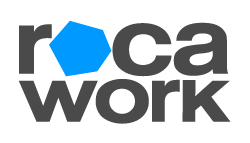Salesforce’s $15 Billion Cash Flow and the Rise of the Agentic Enterprise
Salesforce has long been a heavyweight in enterprise software, but recent numbers show just how massive the company has become. In its latest results, Salesforce reported $15 billion in annual cash flow and over $10 billion in quarterly revenue, growing 10% year-over-year. These figures position Salesforce as one of the largest players in the software industry.
But the story isn’t just about strong financials. Salesforce’s strategy centers on acquisitions, AI-driven transformation, and what Marc Benioff, the company’s CEO, calls the rise of the “agentic enterprise.” Let’s unpack what this means for Salesforce, its customers, and the industry at large.
A History of Growth Through Acquisitions
Salesforce has never shied away from big acquisitions. Over the past decade, the company has expanded aggressively by buying companies to bolster its technology stack and, just as importantly, to acquire their customer bases.
Slack – Acquired for $27 billion in 2021, Slack gave Salesforce a powerful foothold in team communication.
Tableau – Bought for $15 billion, Tableau strengthened Salesforce’s data visualization and reporting capabilities.
Informatica – Acquired for $8 billion, this purchase added trusted data governance and enterprise-scale AI solutions.
Smaller AI startups – Salesforce has also snapped up niche firms like Bluebirds (AI prospecting), Convergence (AI task automation), and Regrello (process automation).
This acquisition spree reveals Salesforce’s strategy: instead of competing directly in every field, it buys innovation and customers, then integrates them into its ecosystem. The result is a vast, all-encompassing platform that covers sales, service, analytics, collaboration, and now AI-driven automation.
Financial Performance That Turns Heads
In its interview with CNBC’s Jim Cramer, Marc Benioff emphasized the sheer scale of Salesforce’s operations:
Quarterly revenue: $10.4 billion, up 10% year-over-year.
Annual cash flow: $15 billion, one of the largest in the software industry.
Remaining performance obligations (CRPO): $161 billion, up 11% from the prior year.
These numbers make Salesforce a giant not only in CRM (customer relationship management) but across the entire enterprise software landscape. Few companies can claim double-digit revenue growth at this scale.
At the same time, Salesforce has been under scrutiny for its workforce reductions—thousands of employees have been laid off as AI automation takes on a bigger role. While these cuts raise questions, they also highlight the company’s pivot toward efficiency and next-generation technologies.
The Agentic Enterprise Vision
The centerpiece of Salesforce’s current strategy is what Benioff calls the agentic enterprise. In this model, human employees and AI agents work side by side to deliver better outcomes.
So far, Salesforce has implemented this in customer support. Over 1.5 million customer interactions have already been handled through a mix of AI and human agents, with customer satisfaction scores holding steady. This suggests that AI can complement human workers without degrading service quality.
The next phase is sales automation. Salesforce is rolling out AI-powered sales agents that can:
Prospect new customers,
Schedule appointments,
Close deals, and
Reconnect with the company’s enormous base of past customers.
According to Benioff, Salesforce has served between 20 and 100 million customers over its 26-year history, but until now, it lacked the staff to engage them all. With AI agents, Salesforce believes it can finally scale customer outreach on a global level.
Challenges and Questions
While the vision is bold, several questions remain:
Transparency of growth numbers – Critics point out inconsistencies in Salesforce’s reporting, such as shifting estimates of customer totals or revenue expectations. This raises questions about whether growth is as strong as it appears.
Dependence on acquisitions – Salesforce’s expansion has relied heavily on buying companies rather than organic customer growth. While effective, it raises concerns about sustainability and integration complexity.
Impact on employees – The company’s layoffs suggest that AI adoption comes with trade-offs for human workers. How Salesforce balances automation with human capital will shape its reputation.
Market expectations – Despite strong numbers, Salesforce’s stock performance reflects investor uncertainty about its long-term trajectory. Even as it beats short-term estimates, revisions to future guidance can cast doubt.
In short, Salesforce faces the classic challenge of a market leader: sustaining growth while navigating skepticism.
Conclusion
Salesforce remains a dominant force in enterprise software, with financial strength, a broad portfolio, and a bold vision for the agentic enterprise. Its acquisitions strategy has made it a one-stop platform, and its embrace of AI positions it at the forefront of digital transformation.
Yet, questions about transparency, sustainability, and the human impact of automation linger. If Salesforce delivers on its vision, it could reshape how enterprises operate—turning every business into a hybrid of human expertise and AI agents. If it stumbles, however, its reliance on acquisitions and automation could expose vulnerabilities.
For now, one thing is clear: Salesforce is betting big on the future of AI-driven enterprise software. And with $15 billion in annual cash flow, it has the resources to keep pushing forward.
Let’s get to know each other!
